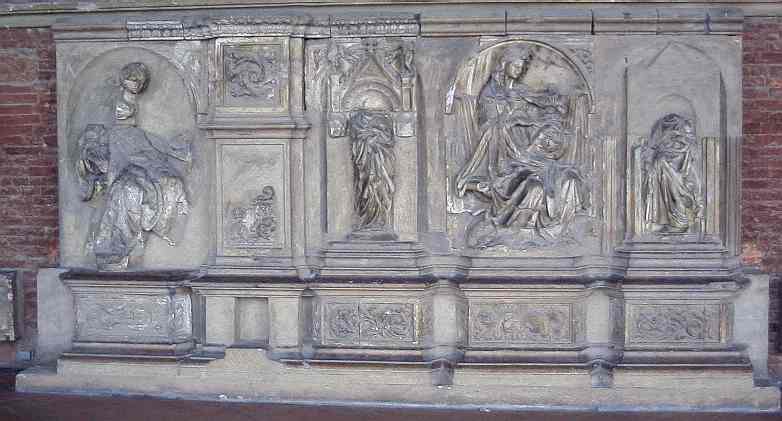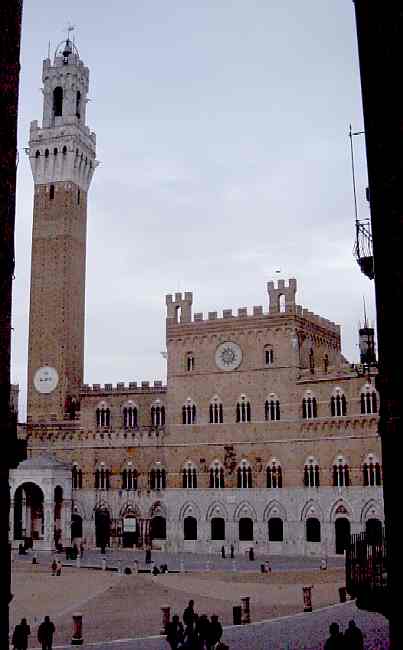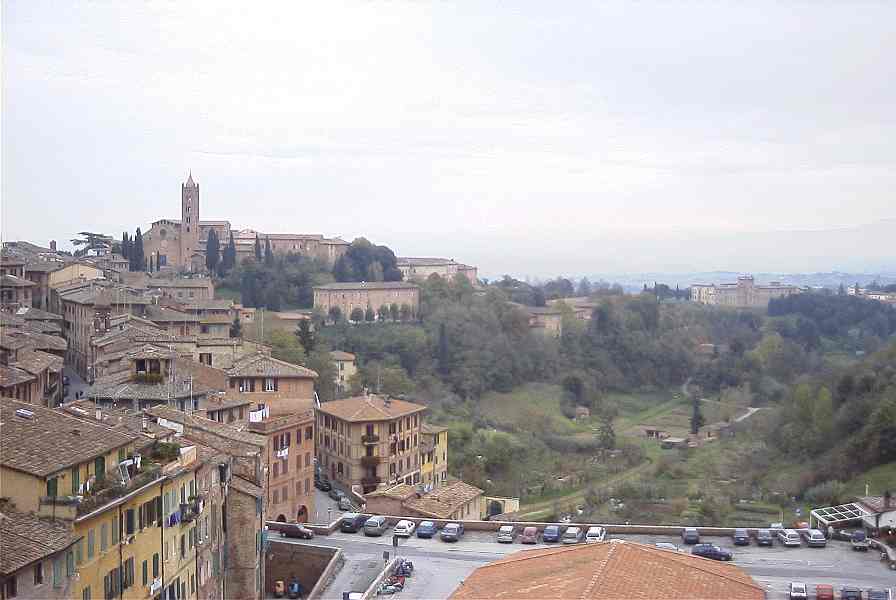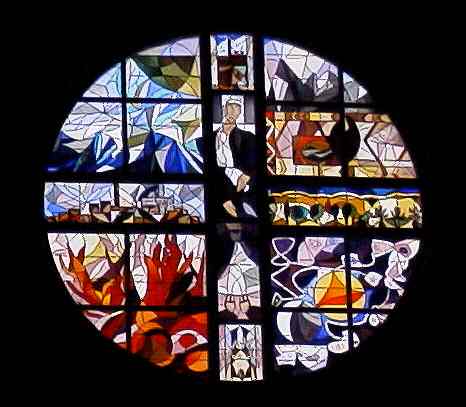

After lunch we walked the few blocks where Sienese public life flourished at the Piazza del Campo, the main "square" of Siena even though it is shell shaped and formed by nine wedged sections radiating out from its old city hall called the Palazzo Pubblico. As the picture at top hints, this is a place of consistent architecture which gives the sense of a contained but spacious area (even though eleven narrow medieval streets clogged with homes fan out from it). Unfortunately I don't have an aerial photo but here's a drawing Pecchioni did in the 18th century (perhaps the copyright has expired by now):

This was the place to live in Siena and so the rich built their palaces until the square was completely enclosed. What we see today is virtually unchanged since the end of the 1300s. Twice a year the Piazza becomes the ultimate tourist trap as a medieval horse race is restaged.
At the highest part of the Piazza (visible in the lower left of the picture at top) sits the Fonte Gaia (fountain of joy), fed by a water system still in use from the fountain's inauguration in 1348. (The Italians have a lot of paid rest rooms that seem to use similar aged plumbing.)

Actually you see a copy of the fountain as the original has been moved to an outside but covered patio area (loggia) in the Palazzo Pubblico. Here's a close up of parts of the original:

The marble panels were added later in 1419 by Jacopo della Quercia, probably Siena's greatest sculptor and a leading architect on Siena's Duomo.
The fountain panels are just one of many sights in the Palazzo Pubblico, one of the most significant secular Gothic buildings dating (in parts) from 1297. Attached to it is its tower which was started in 1325. This Torre del Mangia was completed ten years later just in time to greet the Black Death. The front of the Palazzo shows its window style, widely copied in the rest of Siena and called the Sienese arch.

Inside, the big names of Siena art (the late Gothic Sienese school was probably the best in Italy if not all Europe during the 13th and 14th centuries) decorated room after room with masterpieces in varying states of decay and restoration.
At the top of the Palazzo Pubblico is the loggia where the original panels from the fountain are kept. From here, one can see views of Siena as it clings to its Tuscan hills.

There was much more to see in Siena but we were running out of time so we headed back to our car, stopping on the way at the Basilica di San Domenico where St. Catherine of Siena, a neighbor, had some of her intense religious experiences and received the stigmata before talking the Pope into moving the Papacy back to Rome from Avignon.
The Church is nearly empty except for a chapel which stores the head of Catherine, but here's a modern stain glass window we liked:

Afterwards we walked for an eternity around the medieval walls that surround Siena until finally we gave up and had a taxi find our rental car. (Fortunately we had written down the cross streets). Soon we were on our way to spend the night on the Italian Riveria at Viareggio. The next morning we were off to Pisa. Please join us by clicking here.
Where do you want to go today? Here's a few choices:
